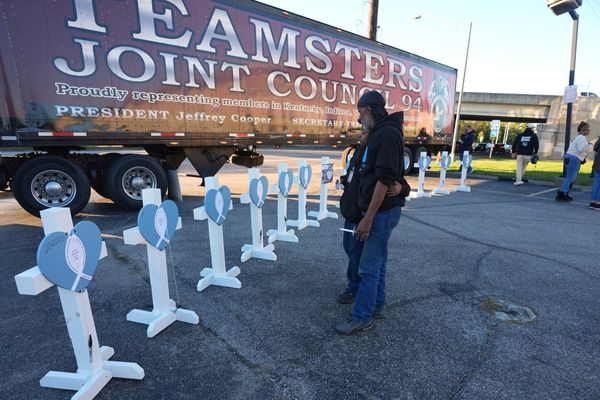
It seems like every pundit and auto industry executive has been screaming from the high heavens within the past few weeks that EV demand is “soft,” and it’s wise if they all collectively back away from making electric cars. Is that true, though? The latest news cycle has proved that there are some serious wins happening among some key EV makers these days.
Hey y’all, welcome back to Critical Materials, our morning roundup of auto industry and technology news. I’m filling in for the usual suspects here at InsideEVs; Suvrat’s still at Toyota’s main HQ looking at all sorts of fun Toyota-branded goodies, while Patrick George is en route back across the country.
This week, Cadillac’s had some big EV wins and Honda wants to wait out the U.S. government, while some automakers are working hard to make factories nearly completely human-free.
30%: Cadillac Is Poaching Tesla Buyers

I’m still not entirely convinced on the execution of General Motors' whole EV strategy, but this must be why I’m writing here and not in any C-suite executive’s office. My personal opinions about cars like the Escalade IQ or Lyriq don’t matter because they’ve become surprising hits for GM, especially when it comes to turning around Cadillac’s image and clientele.
According to reporting from CNBC, Cadillac’s model lineup is poaching a lot of new buyers. A whopping eight out of 10 Cadillac EV buyers are completely new to the brand.
About a quarter of new Lyriq buyers are trading in Teslas, up significantly from 15% last year. About 10% of all Cadillac trade-ins are Tesla vehicles.
CNBC’s Michael Wayland noted that Cadillac wouldn’t admit that Tesla CEO Elon Musk’s politics could be driving the active switch to its EVs, however. But we know it's at least one factor for Tesla owners moving to other brands:
That increase in customer conquesting, as the industry refers to it, comes as Cadillac offers a relatively full lineup of EVs and as Tesla faces declining sales and boycotts this year amid CEO Elon Musk’s support of President Donald Trump and his actions as part of the so-called Department of Government Efficiency, or DOGE.
Cadillac declined to speculate on if Musk’s politics played into Tesla owners’ thinking, saying the carmaker is “building great Cadillacs that are conquesting customers from other brands on the merits of the products.”
Out of all the car brands on the market, Cadillac may be the most poised for success in the EV realm. While brands like Ford, Acura or Lexus struggle to get more than a handful of models onto roads, Cadillac has a nearly full line of EVs for buyers to choose from.
The Lyriq was first, but now there’s everything from the hyper-expensive Celestiq, down to the surprisingly affordable Optiq. For buyers looking to leave Tesla, or just get into a premium EV, more choice is good.
60% Honda Thinks It Should Wait Out The U.S. Government

All hell has really broken loose here in the U.S. when it comes to manufacturing and vehicle assembly. No one thought that the U.S.-Mexico-Canada Agreement (formerly NAFTA) trade deal between the three biggest North American countries would be actively undermined in the way that it has during the first few months of 2025.
Practically every automaker is impacted by President Trump's new tariffs, but Honda may be one of the worst affected. Lots of its forthcoming EV and combustion vehicle development and manufacturing was set to come from Canada. Just last week, Honda announced that it was pausing expansions in Canada, in part due to the tariffs.
But, rather than continue to downsize and scramble to head off concerns of tariffs, Honda CEO Toshirio Mibe thinks that the brand should play it cool, at least for a little while.
According to reporting from Automotive News, Mibe thinks that at the bare minimum, the automaker should wait another three months to figure out where the U.S.-Mexico-Canada trade agreements will go.
“We would like to wait and see how things go a little more. I think it would be better to wait another three months at the earliest. I think maybe we should wait until the midterm elections,” Mibe said at the company’s global headquarters here. “Once we make an investment, we cannot roll it back, so we need to make a careful decision about making new investments.”
Very few Honda and Acura products are imported from Japan. Only the Civic Type R hot hatch is shipped over. However, quite a few Civic and CR-V models are imported from Canada. Similarly, the Honda Prologue EV is Mexican-made.
Currently, the U.S. government is controlled by President Donald Trump and the GOP. If there is a tide shift in 2026’s midterm elections, there could be a better mechanism to push back against his near-unilateral decisions to undo global trade agreements.
Honda may be smart to hold off until the political climate gets better before upending its EV or manufacturing plans too much more.
90% Automakers Really Want Human-less Factories

As the Trump administration tries to bring back manufacturing in the U.S., some car companies want to reduce the number of paid human workers at factories.
An Automotive News story revealed that manufacturers are spending big on tech that could cut the need to pay and hire employees. Hyundai, in particular, has a $21 billion investment in its new manufacturing facilities, which will include Boston Dynamics’ Atlas humanoid robot. Mercedes-Benz is already testing out a similar humanoid robot from Apptronik. Mercedes says that this is ideal for existing factories, since they’re already scaled around a human anyway.
It’s generally assumed that this would be the way to bring manufacturing back to the U.S., with robots doing the vast majority of the work.
I guess Trump would accomplish his goal of manufacturing back in the U.S, but advances in technology mean this might come at the great expense of American jobs. Lights-out manufacturing would require little to no humans to work, defeating the whole purpose of the ongoing trade war in the first place.
Not so fast:
Although researchers have made rapid advances in large behavior models used to train robots, dark factories, also known as lights-out manufacturing, remain aspirational, according to Marie Szymanski, North American general manager of industrial assembly solutions at Atlas Copco, a global maker of industrial tools and equipment.
“We are a ways out from being lights out,” she said. “Just realistically, we’re not quite there yet. As technology and computing, and big data all continue to evolve, we’ll get there. But it’s not quite there yet.”
So, humans will still be involved, at least for a little while longer. How much longer remains to be seen. Humanoid robots with integrated AI could pan out, or they could end up being a huge waste economically. Or, we could be in the early stages of the Terminator universe.
100% If Manufacturers Get What They Want, Then What Next?

I’m glad that Cadillac is finding success in its new EV lineup. They seem to review well; my colleagues here at InsideEVs definitely like them.
For me, though, they just seem a little stuffier and more expensive than I would be comfortable paying. But today’s stories, whether it's dark factories or waiting out the U.S. government, all focus on managing costs to ensure manufacturers can make vehicles and not break the bank.
These brands have tall, tall orders, ones that could dramatically change the industry if they get what they’re asking for.
If all these companies truly get what they want—dark factories, or reduced and removed tariffs—what should they make next? Should they pivot to more big SUVs? Or, maybe put that money saved into more sophisticated AI-driven software? Should they give that money to the people, they may inevitably become jobless due to the lack of need for human workers?
What’s your idea? Sound off in the comments.
Contact the author: Kevin.Williams@InsideEVs.com







